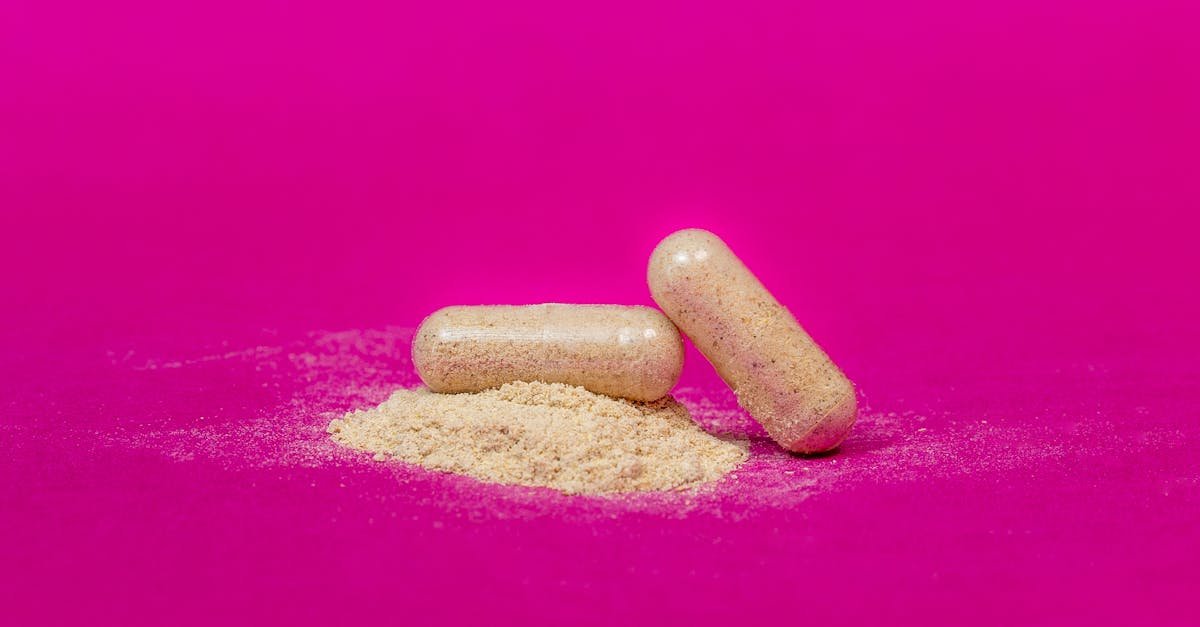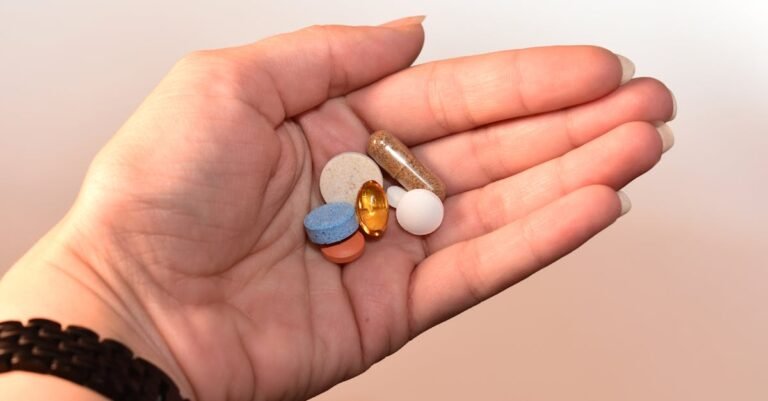Table of Contents
Best Shilajit Supplements for Energy and Vitality
What Exactly is This ‘Mountain Blood’ Called Shilajit?
From Ancient Mountains to Modern Wellness
What’s Inside? The Power of Fulvic Acid and Minerals
Why Turn to Shilajit for an Energy and Vitality Boost?
Fuelling Your Cellular Engines: Shilajit and ATP
Beyond Just Energy: The Ripple Effect on Vitality
Unpacking the Incredible Benefits of Shilajit
Say Goodbye to Fatigue: The Energy Enhancer
Sharpening Your Mind: Cognitive Perks
Turning Back the Clock? Anti Aging Properties
Supporting Hormonal Harmony
Maximizing Nutrient Uptake
Choosing Wisely: How to Find the Best Shilajit Supplement
Purity is Paramount: Avoiding Heavy Metals
The Importance of Third Party Testing
Source Matters: Where Does Your Shilajit Come From?
Resin, Powder, or Capsules: Which Form is Right for You?
How to Use Shilajit Effectively for Maximum Benefit
Finding Your Sweet Spot: Dosage Guidelines
Mixing It Up: Best Ways to Take Shilajit
Important Considerations: Potential Side Effects and Precautions
Conclusion: Embrace Your Renewed Energy with Quality Shilajit
Frequently Asked Questions (FAQs)
Best Shilajit Supplements for Energy and Vitality
Feeling drained? Like your get up and go got up and went? You’re definitely not alone. In our fast paced world, maintaining energy levels and a sense of vitality can feel like a constant uphill battle. We try coffee, energy drinks, maybe even power naps, but often these are just temporary fixes. What if there was something ancient, something drawn from the very heart of the mountains, that could offer a more profound, sustainable boost? Enter Shilajit, a substance revered for centuries in traditional medicine, particularly Ayurveda, for its remarkable rejuvenating properties. If you’re curious about tapping into this natural powerhouse, let’s dive into the world of Shilajit supplements and discover how they might just be the key to unlocking renewed energy and vitality.
What Exactly is This ‘Mountain Blood’ Called Shilajit?
So, what is this intriguing substance? Shilajit (pronounced Shi la jeet) is a sticky, tar like resin that oozes from rocks in high mountain ranges, most notably the Himalayas, Tibetan, and Altai mountains. Its nickname, ‘Mountain Blood’ or ‘Destroyer of Weakness’, hints at its potent nature. But it’s not just rock sweat! It’s the result of a very long and slow natural process.
From Ancient Mountains to Modern Wellness
Imagine centuries, even millennia, of plant matter – herbs, mosses, and other vegetation – getting trapped between layers of rock. Under intense pressure from the mountains and the extremes of temperature, this organic material undergoes a gradual decomposition, transformed by microbial action. Over vast stretches of time, this process creates a dense, mineral rich, bioactive substance: Shilajit. When the summer heat warms the mountains, this resinous material seeps out from the crevices. For thousands of years, traditional healers, particularly in Ayurvedic medicine, have harvested and utilized Shilajit, considering it a Rasayana – a rejuvenator capable of increasing longevity and revitalizing the body.
What’s Inside? The Power of Fulvic Acid and Minerals
What makes Shilajit so special isn’t just its dramatic origin story; it’s the complex cocktail of beneficial compounds it contains. The star player is undoubtedly fulvic acid. Think of fulvic acid as nature’s delivery truck. It’s exceptionally good at transporting nutrients into cells and helping to usher waste products out. This enhances the bioavailability of minerals and other nutrients, meaning your body can actually absorb and use them more effectively.
Beyond fulvic acid, Shilajit is packed with over 84 different minerals in their ionic form – the form most easily utilized by our bodies. These include essentials like iron, magnesium, zinc, selenium, potassium, and calcium, alongside numerous trace minerals. It also contains humic acids (related to fulvic acid), dibenzo α pyrones (DBPs – powerful antioxidants), plant based antioxidants, and small peptides. It’s this unique, synergistic blend, created by nature over millennia, that is thought to be responsible for Shilajit’s wide ranging health benefits.
Why Turn to Shilajit for an Energy and Vitality Boost?
Okay, it comes from mountains and is full of good stuff. But how does that translate into feeling more energetic and vibrant? It primarily boils down to how Shilajit interacts with our body at a cellular level.
Fuelling Your Cellular Engines: Shilajit and ATP
Remember learning about mitochondria in biology class? They’re often called the ‘powerhouses’ of our cells because they are responsible for generating adenosine triphosphate (ATP), the primary energy currency of the body. Everything your body does, from blinking to thinking to running, requires ATP. Fatigue often sets in when ATP production isn’t keeping up with demand, or when mitochondrial function declines (which happens naturally with age or due to stress).
This is where Shilajit shines. Research suggests that Shilajit, particularly its fulvic acid and DBP components, can enhance mitochondrial function. It’s thought to help stabilize CoQ10 (another crucial molecule for ATP production), improve the electron transport chain’s efficiency (the process that makes ATP), and protect mitochondria from oxidative damage. Think of it like giving your cellular power plants a tune up and a protective shield, allowing them to produce energy more effectively and resist wear and tear. More efficient ATP production means more available energy for your body, leading to reduced fatigue and increased stamina.
Beyond Just Energy: The Ripple Effect on Vitality
Vitality isn’t just about raw energy; it’s about overall well being, resilience, and a sense of ‘aliveness’. Shilajit contributes to this broader sense of vitality in several ways. Its rich mineral content helps replenish essential nutrients that might be lacking in modern diets, supporting countless bodily processes. Its potent antioxidant properties combat oxidative stress, a major contributor to aging and chronic disease. By reducing the cellular damage caused by free radicals, Shilajit helps protect tissues and organs, promoting longevity and resilience. Furthermore, its potential role in supporting hormone balance and enhancing nutrient absorption contributes to a feeling of overall wellness that goes beyond simply not feeling tired.
Unpacking the Incredible Benefits of Shilajit
While energy and vitality are often the headline acts, Shilajit’s potential benefits stretch further, touching various aspects of health and well being.
Say Goodbye to Fatigue: The Energy Enhancer
This is the big one for many people. As discussed, by optimizing mitochondrial function and ATP production, Shilajit can directly combat physical and mental fatigue. Users often report feeling more sustained energy throughout the day, without the jitters or crash associated with stimulants like caffeine. It’s not just a quick burst; it’s about supporting the body’s fundamental energy producing mechanisms. Studies, including those looking at Chronic Fatigue Syndrome (CFS), suggest Shilajit may help restore energetic balance.
Sharpening Your Mind: Cognitive Perks
Feeling foggy or forgetful? Shilajit might offer some help here too. Its antioxidant and anti inflammatory properties are believed to have neuroprotective effects. Fulvic acid, in particular, is being studied for its potential to prevent the buildup of tau protein, aggregates of which are associated with cognitive decline. By supporting brain cell health, potentially improving blood flow to the brain, and reducing oxidative stress, Shilajit may contribute to better memory, focus, and overall cognitive function. Think clearer thoughts and a sharper mental edge.
Turning Back the Clock? Anti Aging Properties
While no substance can literally reverse aging, Shilajit is prized in Ayurveda for its longevity promoting qualities. This is largely attributed to its powerful antioxidant activity, especially from fulvic acid and DBPs. By neutralizing harmful free radicals, Shilajit helps protect cells from damage, which is a key driver of the aging process. Healthy mitochondria, supported by Shilajit, also play a role in graceful aging. It’s about promoting cellular health and resilience, potentially slowing down some aspects of age related decline.
Supporting Hormonal Harmony
There’s growing interest in Shilajit’s potential effects on hormones, particularly testosterone in men. Some clinical studies have shown that purified Shilajit supplementation can increase total and free testosterone levels in healthy men. While more research is needed, this suggests a potential benefit for male vitality, libido, and muscle health. The exact mechanisms aren’t fully understood but may involve its mineral content (like zinc) and its overall revitalizing effect on the body. It’s less studied in women, but its adaptogenic qualities might help support overall endocrine balance.
Maximizing Nutrient Uptake
You are what you absorb! Even the healthiest diet is less effective if your body struggles to absorb the nutrients. Shilajit’s fulvic acid acts like a facilitator, enhancing the permeability of cell membranes and improving the transport of minerals and other nutrients into the cells where they’re needed. This means you get more bang for your buck from the food you eat and any other supplements you might be taking. Better nutrient absorption underpins virtually every bodily function, contributing significantly to overall health and vitality.
Choosing Wisely: How to Find the Best Shilajit Supplement
Okay, you’re intrigued. But navigating the Shilajit market can be tricky. Quality varies wildly, and unfortunately, impure or fake products exist. Choosing a high quality supplement is crucial not only for effectiveness but also for safety.
Purity is Paramount: Avoiding Heavy Metals
Because Shilajit is harvested from rocks, it naturally contains minerals – including trace amounts of heavy metals. In its raw, unprocessed form, these levels can sometimes be unsafe. Reputable suppliers use sophisticated purification processes to remove potential contaminants like heavy metals (lead, arsenic, mercury) and microbial toxins while preserving the beneficial compounds. Never consume raw, unprocessed Shilajit. Always look for brands that explicitly state their product is purified and, ideally, provide proof of testing.
The Importance of Third Party Testing
How can you be sure a product is pure? Look for supplements that have been tested by an independent, third party laboratory. These labs verify the product’s purity (checking for heavy metals, pesticides, and microbes) and sometimes confirm the concentration of key active compounds like fulvic acid. Brands that readily share their Certificates of Analysis (CoA) demonstrate transparency and commitment to quality. Don’t just take their word for it; seek out that independent verification.
Source Matters: Where Does Your Shilajit Come From?
Traditionally, Himalayan Shilajit is considered the gold standard, harvested at very high altitudes (often above 16,000 feet). The unique geology and ecosystem of the Himalayas are believed to contribute to its specific composition and potency. Shilajit from other regions like the Altai Mountains or Russia exists, but Himalayan origin is often preferred due to its historical significance and perceived quality. Look for brands that specify the origin and ideally the altitude of their Shilajit source.
Resin, Powder, or Capsules: Which Form is Right for You?
Shilajit supplements typically come in three main forms:
- Resin: This is the most traditional and often considered the purest form – a sticky, tar like substance. It requires dissolving a small portion (usually pea sized) in warm water, milk, or tea. It has a strong, earthy, and somewhat smoky taste that some find challenging. However, it’s the least processed form.
- Powder: Shilajit resin can be dried and ground into a powder. This can be easier to handle and measure than resin and can be mixed into drinks or smoothies. However, drying processes might slightly alter the composition, and powders can sometimes have fillers or anti caking agents added (check the label!).
- Capsules: These contain Shilajit powder encapsulated for convenience. They are tasteless and easy to take, making them a popular choice. The main drawback is that you have less control over dosage adjustments, and quality control regarding fillers or binders within the capsule is important.
Which is best? Purists often favor resin for its minimal processing. Capsules offer convenience. Powder provides a middle ground. The best form for you depends on your preferences regarding taste, convenience, and desired level of processing. The most important factor, regardless of form, remains purity and quality.
How to Use Shilajit Effectively for Maximum Benefit
So you’ve chosen a high quality Shilajit supplement. How do you actually use it?
Finding Your Sweet Spot: Dosage Guidelines
Less is often more, especially when starting with Shilajit. The general recommendation is to begin with a small dose, typically around 100-250 mg per day (often described as a portion the size of a grain of rice or a small pea if using resin). Take it once or twice daily. Observe how your body responds over a week or two before considering a slight increase if needed. The standard dosage often cited in studies is around 300-500 mg per day, split into two doses. Always follow the specific instructions on your product’s label, as concentrations can vary. It’s wise to cycle Shilajit, perhaps taking it for 6-8 weeks, then taking a break for a few weeks, to maintain sensitivity.
Mixing It Up: Best Ways to Take Shilajit
If using resin, the traditional method is to dissolve it in warm (not boiling) water, milk (dairy or plant based), or herbal tea. Stir until it fully dissolves – it might take a minute or two. The warmth helps it dissolve and is thought to enhance absorption according to Ayurvedic principles.
If using powder, you can mix it into water, smoothies, juice, or other beverages. Capsules are simply swallowed with water. Many people prefer taking Shilajit in the morning on an empty stomach for better absorption, or perhaps before a workout for an energy boost. Some take a second dose in the early afternoon if needed, but avoid taking it too close to bedtime as it can be energizing for some.
Important Considerations: Potential Side Effects and Precautions
While generally considered safe when purified and taken appropriately, Shilajit isn’t for everyone, and there are potential considerations:
- Purity:** As heavily emphasized, the biggest risk comes from impure Shilajit contaminated with heavy metals or toxins. Always choose reputable, tested brands.
- Iron Overload:** Shilajit contains iron. Individuals with conditions like hemochromatosis (iron overload) should avoid it.
- Gout:** Shilajit may increase uric acid levels, so those with gout or high uric acid should exercise caution or avoid it.
- Blood Pressure:** Some anecdotal reports suggest Shilajit might lower blood pressure. If you have low blood pressure or are on medication, consult your doctor.
- Allergies:** As with any natural substance, allergic reactions are possible, though rare. Start with a tiny dose to test tolerance.
- Pregnancy and Breastfeeding:** Due to lack of research, it’s best to avoid Shilajit during pregnancy and breastfeeding.
- Medication Interactions:** Consult your healthcare provider before taking Shilajit if you are on any medications, particularly those for blood pressure, blood sugar, or blood clotting.
Always listen to your body and discontinue use if you experience any adverse effects. Starting low and going slow is key.
Conclusion: Embrace Your Renewed Energy with Quality Shilajit
Shilajit truly is a fascinating gift from the mountains, a substance steeped in ancient tradition and increasingly backed by modern research for its potential to enhance energy, vitality, and overall well being. From fuelling your cellular powerhouses to providing essential minerals and potent antioxidants, its benefits are multifaceted. Remember, though, that the key to unlocking these benefits lies in choosing a high quality, purified, and properly tested supplement. Don’t compromise on purity! By selecting wisely, starting with a low dose, and listening to your body, you might just find that Shilajit is the natural boost you’ve been searching for to reclaim your energy and embrace a more vibrant life. Are you ready to explore the power of ‘Mountain Blood’?
Frequently Asked Questions (FAQs)
1. How long does it typically take to notice the effects of Shilajit?
Response times can vary significantly from person to person. Some individuals report feeling subtle increases in energy or mental clarity within a few days, while for others, it might take several weeks of consistent use (2 to 4 weeks or longer) to notice more pronounced benefits as the body adapts and utilizes the compounds. Consistency is key.
2. Can women take Shilajit? Are the benefits different?
Absolutely! While some research focuses on testosterone in men, Shilajit is traditionally used by both men and women in Ayurveda for overall rejuvenation and vitality. Women may experience similar benefits regarding energy, cognitive function, antioxidant support, and potentially support for hormonal balance and bone health due to its mineral content. As always, consulting a healthcare provider is advisable, especially concerning specific health conditions.
3. Is Shilajit resin really better than powder or capsules?
Resin is considered the most traditional and least processed form, which many purists prefer. It allows for easy visual inspection of quality (it should be sticky, dense, and dissolve in water). However, high quality powder and capsules made from purified Shilajit can be equally effective and offer greater convenience and taste neutrality. The “best” form often comes down to personal preference, provided the source product is pure and potent regardless of its format.
4. Is Shilajit suitable for vegans and vegetarians?
Yes, Shilajit itself is a naturally occurring mineral pitch derived from decomposed plant matter and microbial activity. It is not an animal product. Therefore, pure Shilajit (resin or powder) is suitable for both vegan and vegetarian diets. If choosing capsules, ensure the capsule material itself is plant based (e.g., HPMC or vegetable cellulose) rather than gelatin.
5. What does Shilajit taste like, and can I mask the flavor?
Shilajit resin and powder have a very distinct taste – often described as earthy, smoky, tarry, bitter, and slightly salty. Many people find it quite strong and potentially unpleasant initially. Dissolving it in warm milk (dairy or plant based) with a natural sweetener like honey (in Ayurveda, honey is often combined with Shilajit), or adding it to coffee, tea, or a flavorful smoothie can help mask the taste significantly. Capsules bypass the taste issue altogether.










